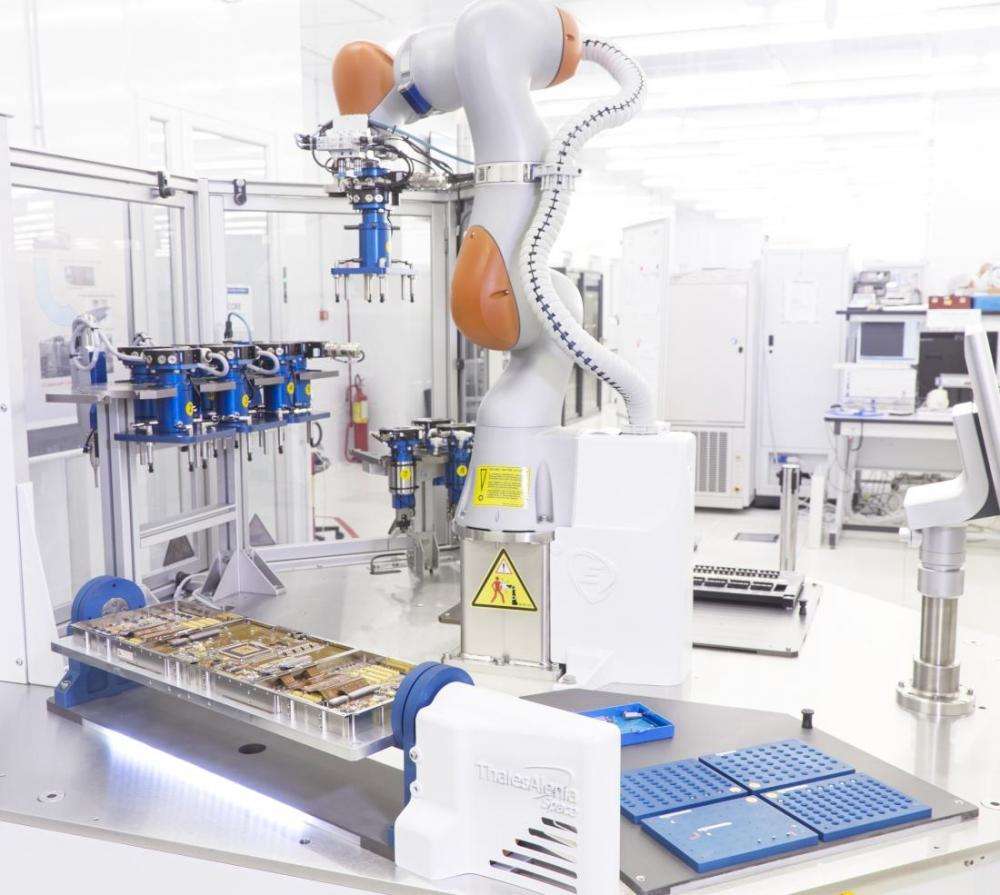Thales Alenia Space is highlighting a new multi-purpose collaborative robot, or “cobot”, being used for satellite production in its L'Aquila plant in Italy.
Thales Alenia Space is highlighting its latest step towards future smart production (“Industry 4.0”) in its factories. In its L’Aquila plant in Italy, the company has revealed the new multi-purpose collaborative robot, or “cobot”, CRATOS, an abbreviation signifying Collaborative Robot Addressed To (sic) Operative Solutions.
CRATOS is currently being used to integrate electronic components into the first COSMO-SkyMed second-generation radar Earth observation satellite.
Donato Amoroso, Deputy CEO of Thales Alenia Space, says the machine facilitates production and accelerates time-to-market while complementing employees’ jobs in addition to automated machines and augmented reality.
For Thales Alenia Space, CRATOS is the first collaborative robot used to integrate electronic equipment. It is designed to operate alongside employees, in the same area without any physical barriers. It is capable of assembling and bonding components and parts, as well as checking these operations.
The CRATOS robot can be programmed via a conventional wire link, receiving instructions from CAD system files, or by a self-learning process. It was designed to continuously extend its scope of applications, including a 3D reconstruction feature, based on a panoramic photographic system and infrared barriers that will increase speed during automated integration while ensuring safety.
Other Industry 4.0 initiatives at Thales Alenia Space include SAPHIR, a collaborative robot in its Cannes facility designed to automatically prepare and install inserts in the structural panels on telecommunications satellites.
The company recently announced the construction of a new state-of-the-art plant in Hasselt, Belgium to produce photovoltaic assemblies (PVA), featuring robotic assembly of panels; digitization of the production process, with digital management of data and traceability, including online tests and checks; and the use of augmented reality.

